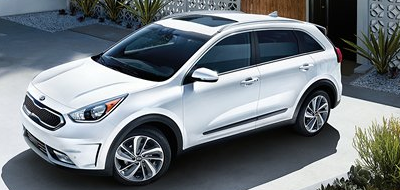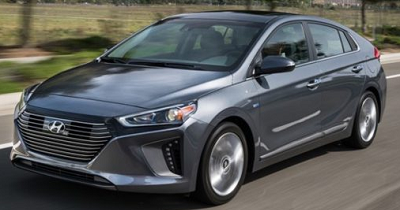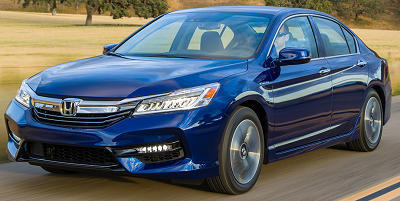Florida is home to white sand beaches, beautiful bayous, and 80% of the U.S’ citrus population. What people don’t know about Florida is the diverse means of transportation. With such a wide array of choices, it’s hard to choose the best Florida commute. That’s why we’ve broken down the best means of commuting in the Sunshine state.
Car
Commute by car is the most common mode of transportation in Florida. However, if everyone drives their own car to work, it could have negative impact on the environment, traffic conditions, and your bank account. Given the opportunity, choose to carpool to reduce the number of cars on the road and to split travel costs.
Ride Sharing App
Ride sharing apps, like Lyft and Uber, are a comfortable way to get around. The biggest problem is trusting a stranger to drive, and the price of the commute itself. The other downside is not having a reason to enroll in traffic school.
Alligator
Alligators are Florida’s most underutilized mode of transportation. They run on biodegradable fuel and can be lined up to mush, like a pack of Alaskan Huskies. Society doesn’t bat an eye at the sight of man’s best friend pulling a sleigh through the snow, but apparently, they think it’s “unnecessarily bizarre” when man’s best reptilian friend is used to pull your airboat to the office.
Bicycle
Bicycling is great for toning those quads and glutes. It’s also a cost-effective way to commute in Florida. With green advocates on the rise, more bikers than ever are commuting to work. Dust off that old bike and roll up those pant legs, because you’re going to want to show off those defined calf muscles.
Skateboard/Scooter
Skateboarding or taking your scooter is a great way to get around if your next stop is nearby and you have a rad personality. Taking your skateboard or scooter means you won’t spend money on gas or a ride sharing app. You might even have a chance of wall riding yourself through a montage of sick ollies.
Motorcycle
Commuting on your motorcycle won’t only show people how tough you are, but it’s also a great way to reduce costs on gas. The downside of commuting on a motorcycle is the dangers of rush hour traffic and reckless drivers. However, if you’re riding a motorcycle, you might be too tough to even notice you wrecked.
Bus
Buses are a great way to relive those precious memories of going to grade school. But, what people don’t realize, they’re also an effective way to get around the city. If you pretend all the sick, angry people are lifelong friends you met in grade school, the commute doesn’t seem that bad.
Vanpool
A vanpool is similar to a carpool, but, instead of 3-4 people, you have around 6-8 people in a van. This commuting method is popular for people who work in the same office. Vanpools are like taking a small bus, but you know the sick, angry people.
Airboat
Thick, overgrown waters aren’t very conducive for driving a car. But, airboats have no issue gliding across those Floridian bayous and swamps. Swamp people can get to and from their bustling nine to five in the city while coasting over murky, alligator infested waters in a compact airboat.
Train/Subway
Commuting by train or the subway is a smart choice if you live in a metropolitan area. If you don’t mind close quarters with strangers, and the risk of getting sick from slimy surfaces, then the train is a great economic commute.
The search for the perfect vehicle is certainly draining. There are all sorts of factors to consider from cost to mileage, features, prior accidents and so on. Thankfully, there are plenty of helpful car research services available to make this process that much easier. Let’s look at three of the best resources that will help you find the right vehicle.
CarGurus
CarGurus was launched by some of the web’s leading executives. High-level execs from Edmunds.com, TripAdvisor and Expedia make up the popular service’s management and board. CarGurus has quickly emerged as one of the most revered automotive shopping sites in the world. CarGurus analyzes millions of vehicle listings through a proprietary valuation model to gauge each vehicle’s Instant Market Value.
This value is obtained by weighing an array of variables that impact vehicle value ranging from vehicle trim, model and make to mileage, condition, options and so on. These variables are used in combination with comparables in the shopper’s local market to determine the Instant Market Value for every single vehicle in the service’s inventory.
Go ahead and search for a vehicle on CarGurus’ site and you will obtain a ranking of matching listings according to savings relative to the Instant Market Value. Vehicles priced with the most customer savings rank the highest in the search results. This is one of the quickest ways to find the best local automobile deals. Rest easy, as there isn’t any subjective bias influencing the search results. CarGurus provides a quick, transparent and fair way to connect auto-seekers with dealers. The website can even help vehicle sellers pinpoint the best price for their vehicle and connect with interested buyers.
Carfax
Just about everyone who is interested in a used vehicle considers obtaining documentation of its history. If the vehicle has been involved in an accident, the prospective buyer deserves to know. This is precisely why Carfax exists. The popular service provides accurate vehicle history information. Carfax taps into 76,000 information sources to determine whether vehicles up for sale have been involved in an accident. Though Carfax admits its records do not always contain the full history of a vehicle, the company’s results are fairly accurate. Information is culled from motor vehicle departments, police departments, auctions and beyond.
All in all, Carfax has 12 billion vehicle records. More than three million records are added daily thanks to the efforts of Carfax’s data-gathering team. Each vehicle’s report is drawn from a national database in mere seconds. Auto buyers should not hesitate to obtain the Carfax vehicle history report but understand it is not completely foolproof. There is always the possibility the vehicle in question has endured damage in a prior accident that was never reported (to anyone) or simply not reported to one of Carfax’s specific information sources.
Cars.com
Cars.com is a popular automotive site based in Chicago. This is an online destination for auto shoppers to sort through new, used and certified used vehicles. The purpose of the site is to facilitate the vehicle search process by providing buyers with information and tools. Whether you are looking for expert auto reviews, detailed research tools or a vast selection, you will find it on Cars.com.
Buyers can search for local and national databases of vehicles for sale. The site lets buyers compare vehicles side-by-side, estimate monthly payments and learn from a quick-start auto-buying guide. Cars.com also helps buyers pinpoint the best financing offers and rebates available in their area. Everyone in the market for a new or used vehicle should spend at least half an hour on Cars.com. Even if you don’t find the vehicle you are looking for, you are guaranteed to learn something during the time you spend on this informative website.
The cost of gasoline has dipped below $2.00 a gallon in some parts of the country. Enjoy the low prices now because they probably won’t last much longer. When the price of gas ticks upward people start to think about how many miles it takes to get from point A to point B and what it will cost to get there. Let’s check out the best mileage calculators and vehicles with the superior fuel efficiency.
Mileage Calculators
Type “mileage calculators” into a search engine and you will be provided with a seemingly endless number of results. Some mileage calculators shine brighter than the rest. Rand McNally offers a simple and easy-to-use mileage calculator. All you have to do is enter your start point and end point. The calculator will determine the length of the trip and how long it will take. The U.S. Department of Energy’s mileage calculator is a bit more complex. Select your vehicle’s year, make, model and mpg along with the trip’s start point and end point. The system does the rest. If you are in a rush to get to your destination and are slapped with a speeding ticket, be sure to enroll in a defensive driving course to keep your auto insurance and driver’s license in good standing.
MapQuest maps out routes and calculates mileage between two points. You can even use a business’s name as the start or end point for your trip. This is quite helpful if you do not know the exact address of the business you plan on visiting. Google Maps has one of the best distance calculation tools. It plots routes, allows you to add stops along your trip and instantly calculates mileage for each alteration.
Vehicles with the Best Fuel Efficiency
Toyota Prius Prime

This is the first-ever hybrid plug-in to join Toyota’s recently expanded Prius group. It sells for around $27,000 but the real savings are enjoyed in the context of fuel efficiency. This incredibly efficient ride provides 55 mpg in urban areas and 53 mpg on highways. The gas engine doesn’t kick in until the all-electric range reaches its limit.
Kia Niro

The Kia Niro is a fairly small sport utility vehicle that provides fantastic fuel economy. The Niro offers 52 mpg in cities and 49 mpg on highways. It has plenty of technological similarities to the Hyundai Ioniq. The engine is a 4-cylinder with 1.6 liters. It is paired with an electric motor to provide just under 140 horses of power. Yet the Niro doesn’t have a rough driving experience like so many other hybrid vehicles. It really feels like a traditional gas-powered vehicle. The best part is the Niro won’t break the bank. It has a starting MSRP of $22,980.
Hyundai Ioniq

The Ioniq provides 59 mpg on highways and 57 mpg in cities. This is one of the cheapest hybrid vehicles on the market with a starting with a MSRP of $22,200. The Ioniq is certainly a viable competitor in the hybrid segment. This compact ride has a 1.6 liter 4-cylinder engine tied to an electric motor. The Ioniq rolls along with the power of 139 horses. It has all sorts of high-tech features like Android Auto, Apple CarPlay, a 7-inch touch screen and a rearview camera.
Honda Accord Hybrid

This midsize vehicle offers 49 mpg in cities and 47 mpg on highways. Though you can certainly find a vehicle with superior fuel economy, it will be difficult to pinpoint one with the same cargo and seating space as this fuel-efficient hybrid. You’ll have to pay around $30,000 for the Accord hybrid yet it is chock full of snazzy features. Don’t forget that you’ll save plenty of money on fuel costs thanks to the new Accord’s fantastic fuel economy.
If you are planning on selling a vehicle in Texas, you will have to fill out some paperwork. Sweat the subtleties of the transaction now and you won’t have to deal with them down the road. Let’s look at the paperwork that must be submitted to the Texas Department of Motor Vehicles to officially transfer ownership of your vehicle. We’ll also touch on additional documents necessary to sell a vehicle in Texas.
Title Transfer
The state of Texas requires that your vehicle’s title be transferred to the new owner. To make this transfer, you must fill out the title assignment found on the back of your vehicle’s official title certificate. If you fail to perform a legal title transfer when selling your car, there will be consequences. As an example, it is possible that you will be held responsible for subsequent crimes and violations committed in the vehicle. It is prudent to go to the nearest county tax office with the vehicle buyer to guarantee that the application for the new vehicle title is filed. If you need a certified copy of your automobile’s title from the Texas Department of Motor Vehicles, fill out the VTR-34 form. You can download this form from the DMV’s online library of forms.
Additional Documents Necessary to Sell a Car in Texas
As a seller of a vehicle, you must provide specific documents to the buyer. These documents include the bill of sale, a valid vehicle title, the completed title assignment with signature and odometer disclosure. Be sure to make copies of these documents to store in your records. You never know if any technical or legal challenges will pop up in the future. At this point, it is the buyer’s responsibility to complete the remainder of the required documents and pay the fee necessary to register the vehicle in his name in the state of Texas.
Supplemental Material That Will Help You Sell Your Vehicle in Texas
Texas has nuanced laws concerning vehicle efficiency and safety. Therefore, most vehicle buyers ask sellers for an in-depth vehicle history report before agreeing to a sale. Such a report provides information about the vehicle ranging from prior accidents to major repairs, odometer alteration and/or instances of theft. If you have endured any sort of accident, consider enrolling in a TX driving safety course. This course will enhance your defensive driving skills. Such a course might reduce your automobile insurance rate. It is even possible that this course will remove points from your driving record after a speeding ticket or other violation. Have your vehicle history report on-hand so you can show it to the buyer immediately after he requests it. Furthermore, having the vehicle history report on-hand makes it that much easier to market your vehicle and ask the highest possible price.
Transfer the License Plates
You must remove the license plates from your vehicle before the buyer accepts the keys and drives off. It is possible to transfer these license plates to another vehicle you own. Reach out to your nearest county tax assessor collector’s office for details on such a transfer.
Don’t Forget the Bill of Sale!
It is necessary to document the actual sale of your vehicle. The transaction is recorded on a “bill of sale”. This document should include all essential information about the seller, the buyer, the automobile and the agreed sale price. Sign and date the bill of sale and request that the buyer does the same. Make copies for yourself and the buyer. Keep this document in your records as it is proof of the vehicle sale transaction.
If you are in the market for a new or used vehicle, you might feel overwhelmed by the number of options. Don’t be paralyzed by the seemingly endless amount of information to sort through. The best way to figure out the perfect type of vehicle for your needs and desires is to spend some time reviewing what you require in an automobile and how it will be used.
Think About What You Need the Vehicle For
The type of vehicle you select should suit your specific automotive needs. Be practical with this decision. Always opt for function over form. Think about what you will use the vehicle for. Maybe you have a large family or own a business and need ample space to transport people/cargo. Consider the road conditions of your area and the places where you will venture for road trips. These conditions will partially determine whether you should purchase a vehicle with all-wheel drive. If you have an especially long commute to work or school, fuel efficiency should be a top priority.
If you have been injured in an accident in the past or if you are transporting youngsters, you should key in on vehicles with top-notch safety features. If you plan on taking the vehicle off-road or using it for towing, don’t opt for a diminutive sports car or sedan. You can whittle down the field to sport utility vehicles and trucks if you plan on embarking on off-road adventures or performing tows. Finally, consider the amount of space available on your property for parking. If you have a small garage or an especially narrow driveway, purchasing a monster sport utility vehicle, van or truck might not be prudent.
Vehicle Entrance and Exit
Sweat the small stuff when it comes to vehicle entry and exit. Think about who will ride in your vehicle. If you transport senior citizens or especially tall individuals, they will have difficulties entering a large sport utility vehicle or truck that requires the use of a stepladder for entrance. These individuals will also find it difficult to enter a low-slung sports vehicle.
Vehicle Handling
It is important to get a gauge of a vehicle’s handling before committing to a purchase or lease. If you have driven a specific style of car for most of your life, it is time to test drive other types of vehicles. Take a sports car, coupe, sedan, truck, sport utility vehicle and/or van for a ride. Get a feel for how each handles. You might find those midsize sedans you have been driving your entire life handle somewhat similar to crossover sport utility vehicles. If you end up getting a vehicle with crisp handling and rapid acceleration, don’t let the extra power result in a speeding ticket. If you are ticketed, enroll in a defensive driving course so you don’t end up with points on your driving record and a higher insurance rate.
Be sure to pick the salesman’s mind before, during and after your test drive. He will educate you about the ins and outs of each particular vehicle to help you decide on the perfect automobile for your unique needs. The salesman can also point you in the direction of a specific style of vehicle that suits your idiosyncratic requirements for handling, power etc.
Think About What You Desire in a Vehicle
Though automotive needs should always trump desires, this does not mean you should select a vehicle simply because it provides superior utility. After all, a minivan might suit your needs yet disappoint in the looks department. Find the right balance between utility and style, performance and high-tech niceties. Keep in mind that a practical vehicle with an attractive exterior, precise handling and an array of features will likely fetch a better price when the time comes to sell.
If you’re looking up an article called “Basic Mechanics of a Car” then we’re gonna go ahead and bet that you have absolutely no ideal what the heck is going on under the hood of your car. The basics are often explained during a traffic school course, (usually necessary when getting a traffic ticket), but we’ll also explain here.
THE ENGINE
The engine is basically a box that’s built to house explosions. Your car runs on explosions. Here’s how:
1. You press the gas.
2. Gasoline is fed from your fuel tank to the pistons, where the petrol mist mixes with air
3. The spark plug hits the piston and a small explosion takes place
4. The explosion is contained in the chamber, pushing the piston, which pushes the gears and racks and this and that in order to turn your wheels
The truth is that it’s not exactly space travel. The physics at work are incredibly simple. Building an efficient car engine, a durable car engine, a clean-running car engine, that’s a little more complicated. But the basics are just explosions captured in small chambers, pushing pistons to spin the rear axle.
THE BRAKES
Most cars use disc brakes. The mechanics at play here are so simple that we don’t even need to write a numbered list for it! You push the brake pedal, and it pushes fluid through a tube leading to a set of padded, grippy discs. The discs extend and grip the wheel, slowing it down.
Most brakes are attached to the front of the car. This is because, when the car stops, the weight is thrown to the front. Rear brakes are more likely to result in dragging than front brakes.
When you ride a bicycle or a motorcycle, you usually use the rear brakes. This is because there’s simply not enough weight on a bike to keep you from flipping head-first over the handlebars and eating asphalt. With most cars this is less of a concern.
THE ELECTRIC CARS
Most electric cars use some kind of combination of gas and electric power. But assuming we’re talking about a wholly electric car, the mechanics of it are pretty neat: Current is passed through a series of magnets, usually arranged in a circle, in order to create a rotating magnetic field.
In the center there will be a magnet attached to an axle, so that when the magnetic field rotates, the axle rotates with it. You’re turning electrical movement into physical movement that you can actually put to work for you.
You’ve probably played with fridge magnets and found that they attract, but when you turn one around, they repel one another, right? That invisible magnetic field attracting the two magnets and pushing them away from one another is how electric motors work.
Of course, you’ve also found that if you push hard enough, you can force the repellent ends together, right? This is why it takes so much electricity in order to push a car down the road. You’re not going to be able to do that with a couple of fridge magnets, you need a whole lot of force, and a whole lot of electricity in order to generate it.
This is one of the reasons why electrical cars tend to be so light. This, in addition to the fact that they do not require the heavy metal engine block that conventional cars use in order to contain the thousands of explosions they need in order to get from point A to point B.
The mechanics behind your car’s functions are a lot simpler than you might assume. The tricky part is orchestrating them all to work in unison.





 Live Chat
Live Chat



